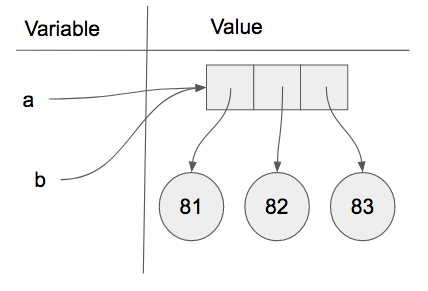Checkpoint 9.5.1.
- [’Jamboree’, ’get-together’, ’party’]
- Yes, the value of y has been reassigned to the value of w.
- [’celebration’]
- No, that was the inital value of y, but y has changed.
- [’celebration’, ’Jamboree’, ’get-together’, ’party’]
- No, when we assign a list to another list it does not concatenate the lists together.
- [’Jamboree’, ’get-together’, ’party’, ’celebration’]
- No, when we assign a list to another list it does not concatenate the lists together.
What is the value of y after the following code has been evaluated:
w = ['Jamboree', 'get-together', 'party']
y = ['celebration']
y = w

